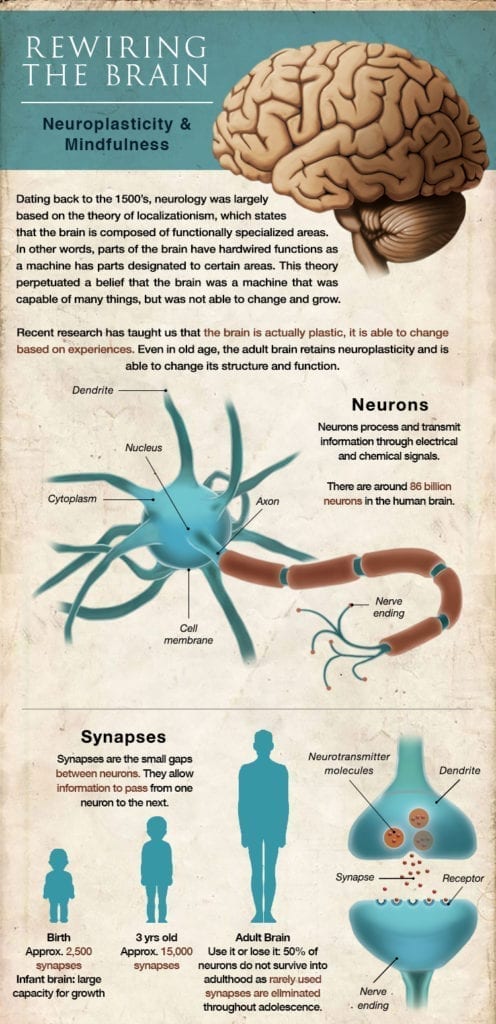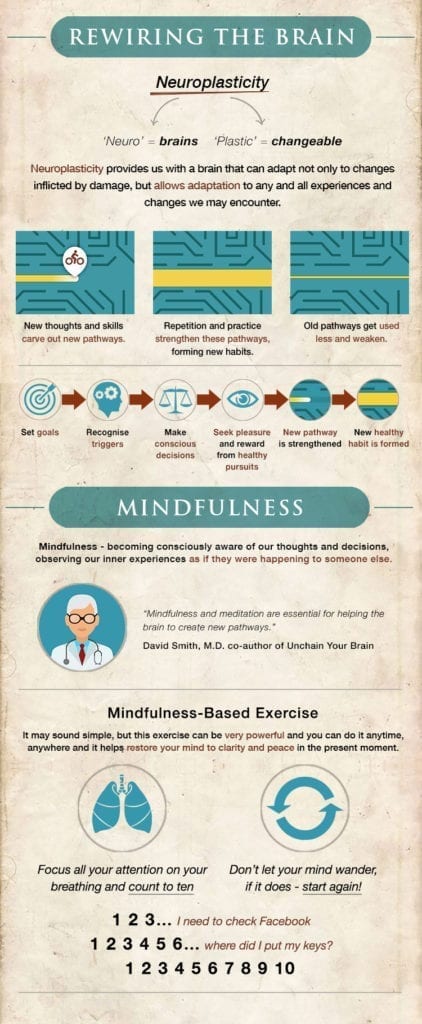Paul Rooprai
Hamilton, Ontario, Canada
Approach as a Medical Illustrator
The modern-day perception of mindfulness and meditation is inextricably linked to the mind, which is associated physically with the brain. The rendering of the brain at the top of the poster represents the biological processes that mindfulness promotes in the brain. The renditions of the neuron and the synapse are placed one after the other to support the observer’s understanding of brain structure and function. Such a layout, moving from general to specific, prepares the observer for the concept of neuroplasticity and its connection to mindfulness. Additionally, laying out the images from a macro to micro perspective—brain to neuron to synapse—helps to create a sense of movement, guiding the viewer down the poster.
The vector images were chosen to support the discussion of processes throughout the poster, such as the number of synapses from birth to adulthood. The clarity and simplicity of vectors make them effective when paired with text in helping the observer understand and visualize the associated processes.
Further, the professional and scientific feel of the poster is augmented through a carefully selected color palette, chosen to create consistency and complementarity.
Lastly, the target audience was crucial in determining the choice of language and integration of text with images. The poster is aimed at a younger adult audience without a background in science. As such, the poster is organized into compartments that are related and build on one another in order to support knowledge acquisition. Each compartment contains clear images that are supported by simple text and placed to create a dynamic feel.
About Mindfulness
Mindfulness varies widely in technique and it is influenced by different cultures and religions from around the world. In its simplest form, mindfulness is the process of bringing ones attention to experiences occurring in the present moment. In practice this is usually accomplished by focusing on the breath.
Clinical studies have documented the clear connection between mindfulness and the brain. The brain is capable of undergoing the process of neuroplasticity, which in essence means that the pathways in the brain are changeable. One way that we can positively influence the pathways in our brain is through the practice of meditation.
Personally, I am someone that is passionate about personal wellness and this has motivated me to adopt a mindfulness meditation practice on a regular basis. After seeing many positive benefits from a daily meditation practice such as a renewed perspective on life and coping with stress, I was encouraged to advocate for this simple, yet effective practice. I think it is of utmost importance to take the time in doing positive things for mental health, and mindfulness is a powerful tool that can help us to manage our health in this way.
 |
 |
PAUL ROOPRAI is a graduate from the Health Sciences program at McMaster University.

Leave a Reply